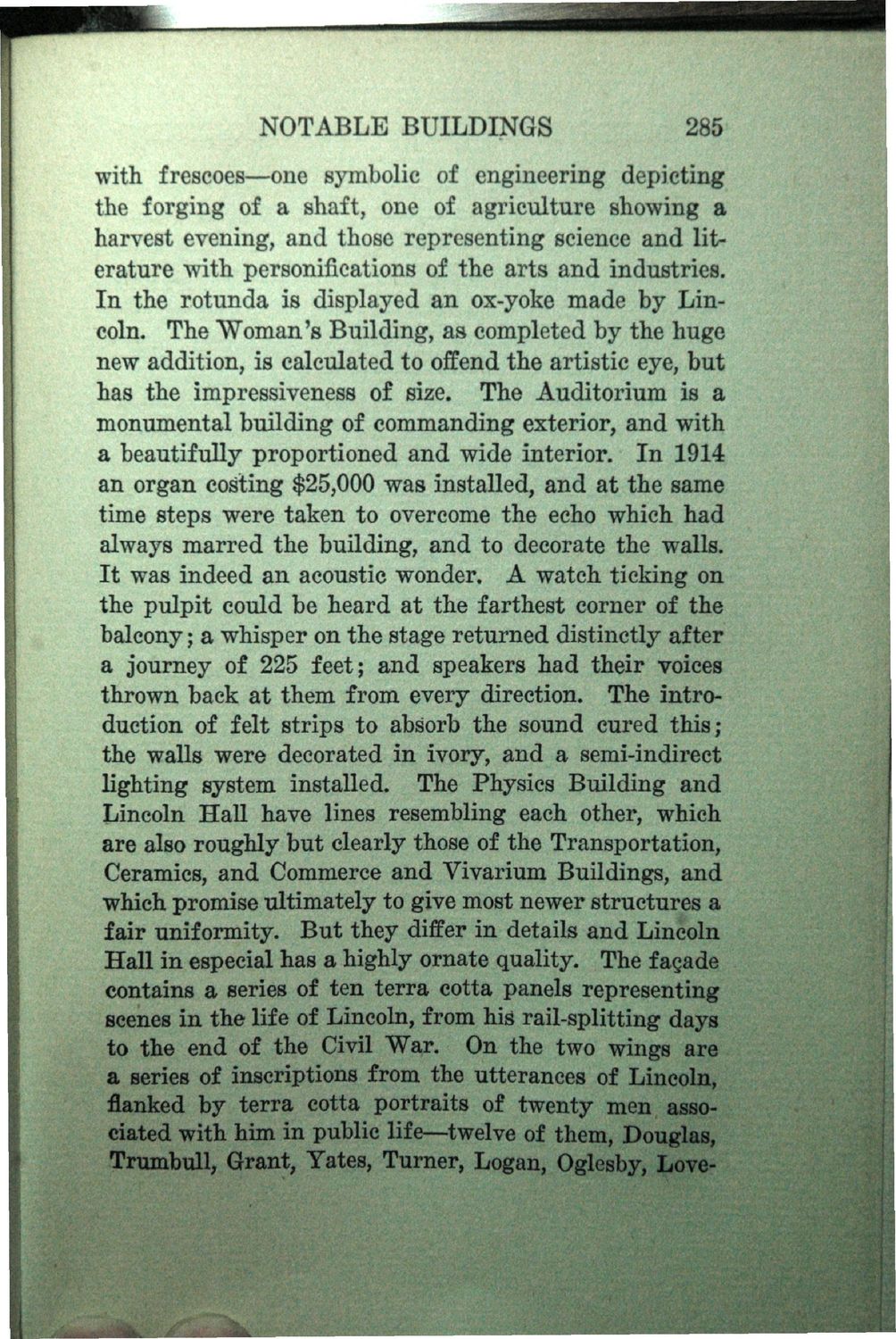| |
| |
Caption: Book - History of the University (Nevins)
This is a reduced-resolution page image for fast online browsing.

EXTRACTED TEXT FROM PAGE:
NOTABLE BUILDINGS 285 with frescoes—one symbolic of engineering depicting the forging of a shaft, one of agriculture showing a harvest evening, and those representing science and literature with personifications of the arts and industries. In the rotunda is displayed an ox-yoke made by Lincoln* The Woman's Building, as completed by the huge new addition, is calculated to offend the artistic eye, but has the impressiveness of size. The Auditorium is a monumental building of commanding exterior, and with a beautifully proportioned and wide interior. In 1914 an organ costing $25,000 was installed, and at the same time steps were taken to overcome the echo which had always marred the building, and to decorate the walls. It was indeed an acoustic wonder. A watch ticking on the pulpit could be heard at the farthest corner of the balcony; a whisper on the stage returned distinctly after a journey of 225 feet; and speakers had their voices thrown back at them from every direction. The introduction of felt strips to absorb the sound cured this; the walls were decorated in ivory, and a semi-indirect lighting system installed. The Physics Building and Lincoln Hall have lines resembling each other, which are also roughly but clearly those of the Transportation, Ceramics, and Commerce and Vivarium Buildings, and which promise ultimately to give most newer structures a fair uniformity. But they differ in details and Lincoln Hall in especial has a highly ornate quality. The fagade contains a series of ten terra cotta panels representing scenes in the life of Lincoln, from his rail-splitting days to the end of the Civil Waf. On the two wings are a series of inscriptions from the utterances of Lincoln, flanked by terra cotta portraits of twenty men associated with him in public life—twelve of them, Douglas, Trumbull, Grant, Yates, Turner, Logan, Oglesby, Love-
| |